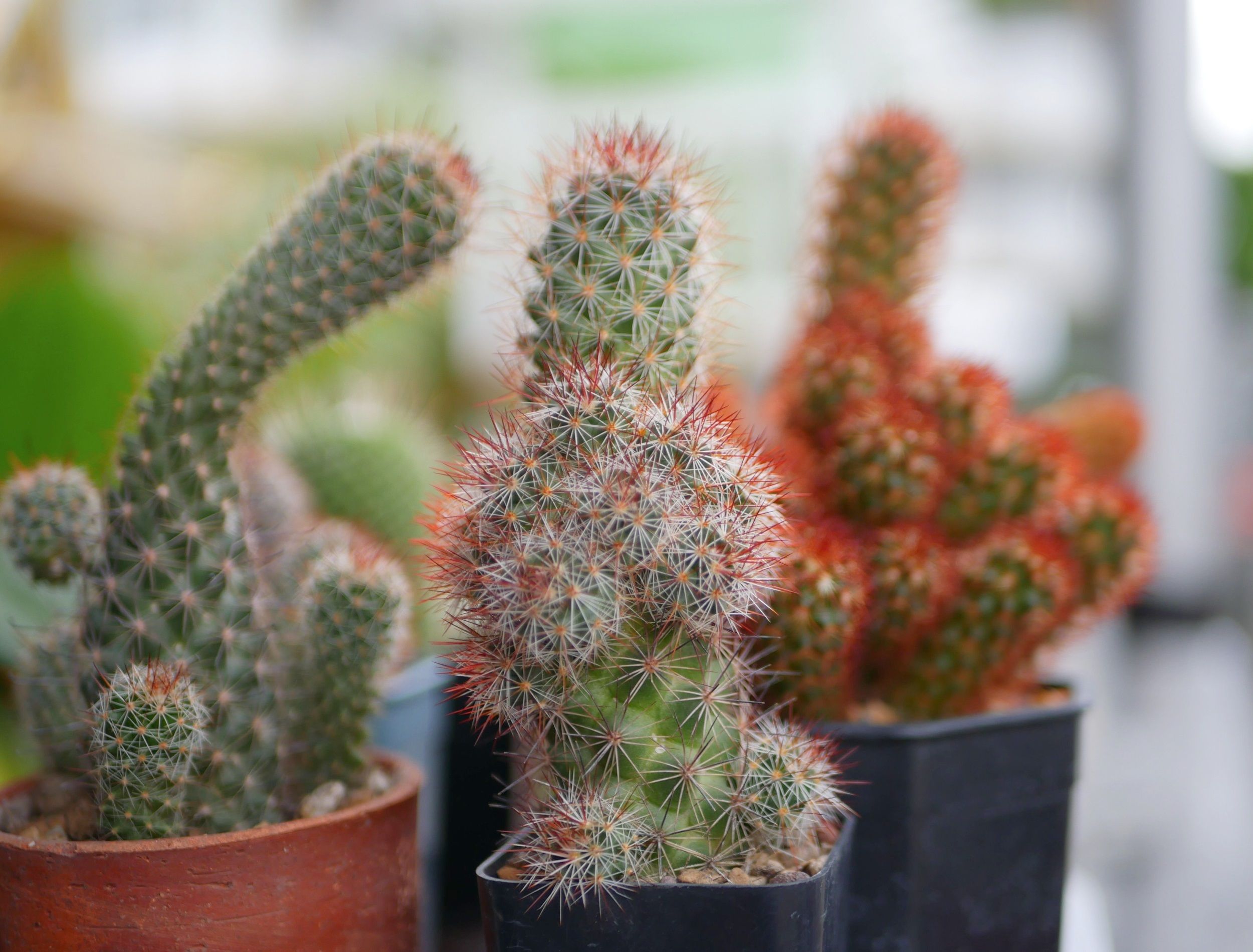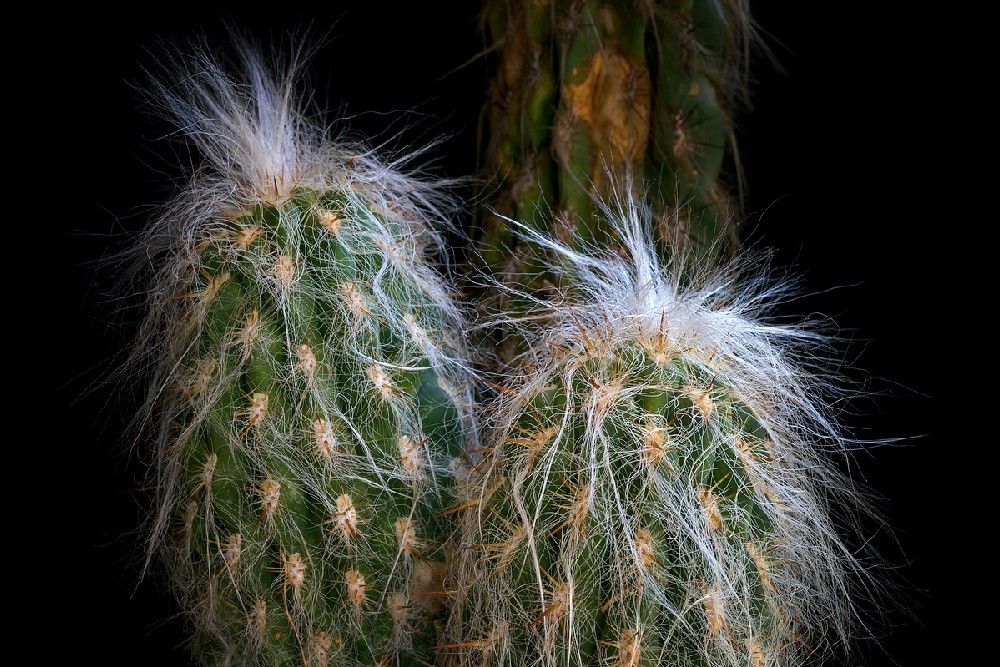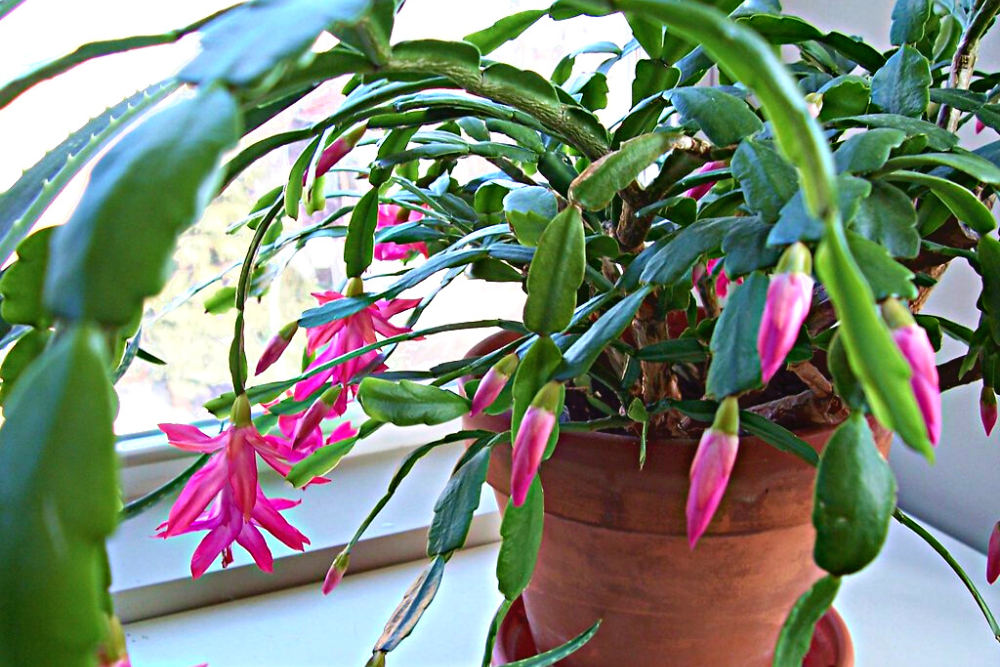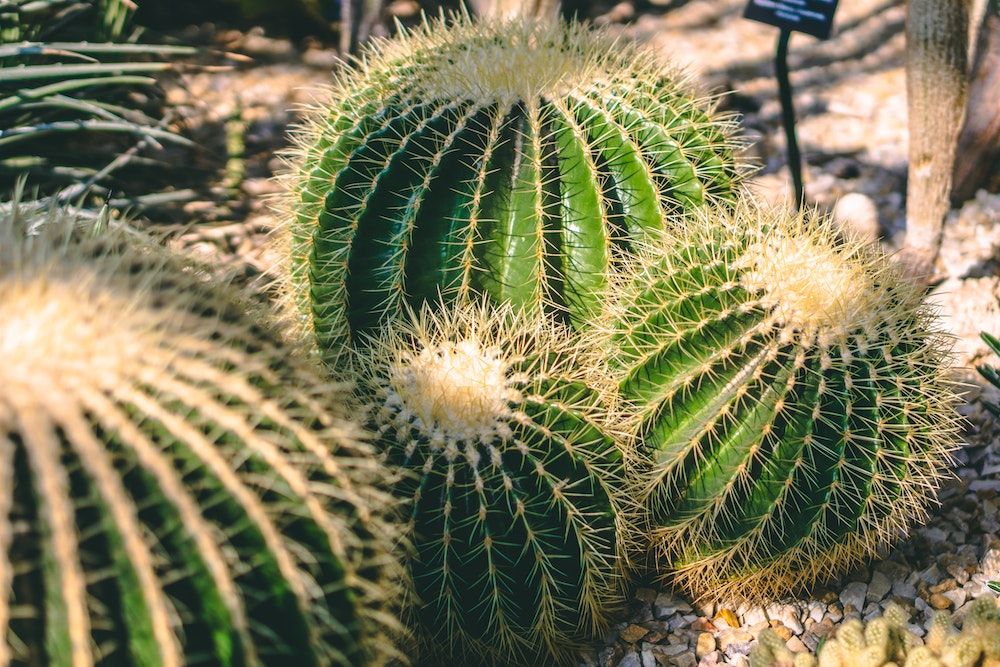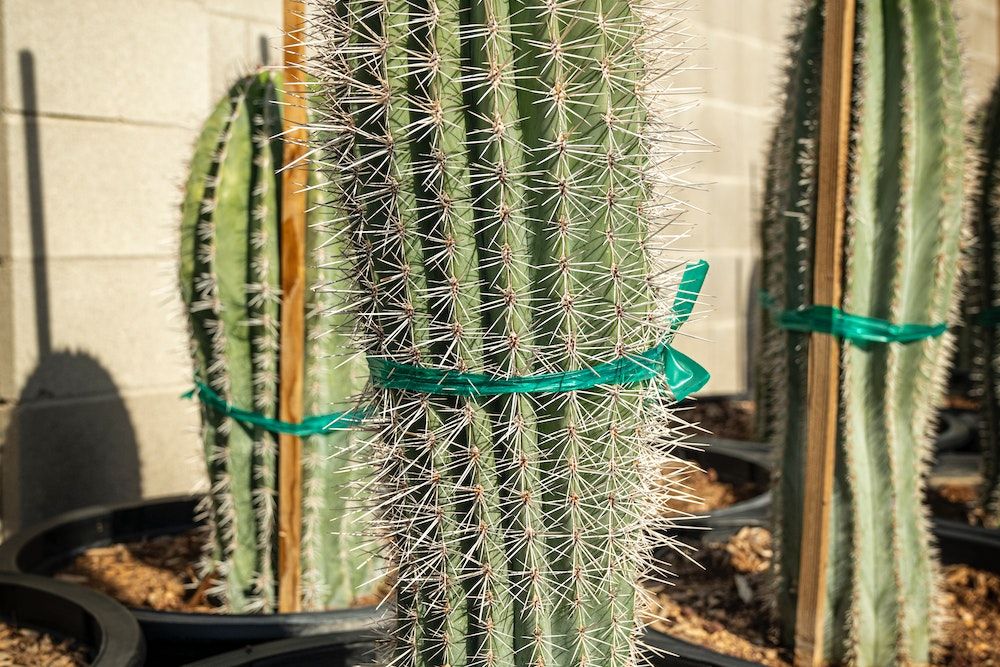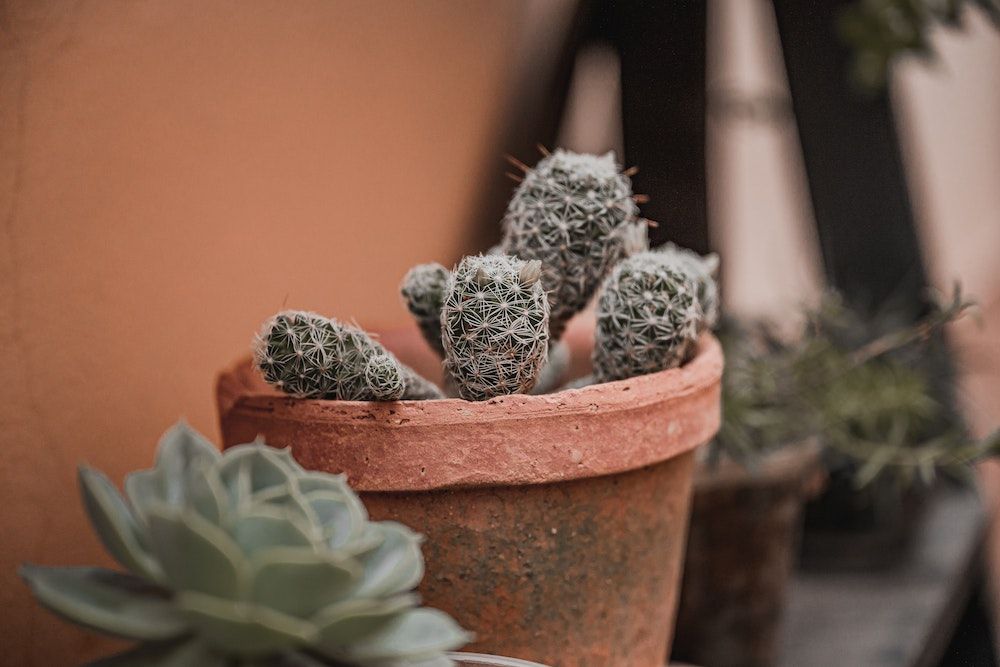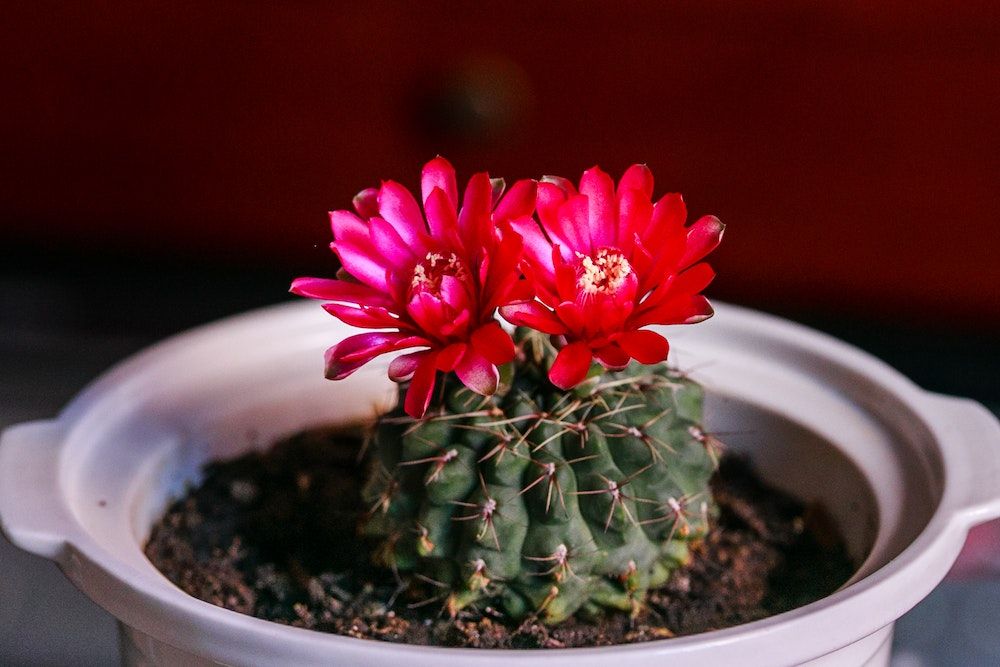Cacti are ideal when you want green friends that can quickly grow inside your home. They go well with a desert-inspired interior design scheme and you can even combine and contrast them to make your own little cacti garden.
Most cacti are low-maintenance plants that don't do well in low temperatures, so they are as comfortable in your apartment as you are. The best part is that they demand little to no care, perfect for anyone who regularly forgets to water and prune them. There are many types of cacti, but these six species are particularly easy to grow in your home if you don't have much time or space!
Old Man Cactus
Image credits: Polifoto via Pixabay
Not only is the old man cactus one of the simplest cacti to grow indoors, but it's among the most stunning! It features a columnar cactus covered with long white hairs, which catches your attention instantly.
The plant requires bright sunlight and a well-drained soil mix to encourage hair growth. When watering your plant, ensure the soil doesn't get too wet. This can cause root rot and ultimately kill your plant.
Fertilize it monthly with a potassium-rich fertilizer during the growing season. This cactus can produce 7 inches of growth yearly if it is well-fed, watered, and fertilized through the warmest month. While the old man cactus does flower, it can take up to 10 years for it to bloom!
If you have fur babies at your home, note that they are non-toxic to cats and dogs. It's best to place them in an area out of reach.
Christmas Cactus
Image credit: spablab via Openverse
The Christmas cactus, or Schlumbergera x buckleyi, is a flowering plant native to Brazil. They are often confused with Thanksgiving cactus, their similar looking twin. The Christmas cactus is eye-catching and is often planted for its beautiful flowers, which bloom in red, pink, purple, orange, or white around the winter holiday season.
The main rule about this plant is to avoid overwatering! Before watering your Christmas cactus, check the top soil -- it should be dry to the touch. When you do water it, make sure to drench the soil until liquid seeps from drainage holes at the bottom of the pot. Once all excess moisture has drained, set the plant back on its saucer, tray, or windowsill.
Speaking of, keep your plants in an east-facing window or in bright, indirect light. Too much direct sunlight can quickly bleach the leaves of sensitive plant varieties. If the Christmas cactus receives too much light, you won't get any blooms.
How To Get Blooms
To promote blooming, the plant requires 8-10 hours of indirect sunlight and 14 hours of darkness. You can cover your plant with a cloth at night to give it 14 hours of uninterrupted darkness or move it to the basement in order to watch your flowers bloom.
Temperature also plays a vital role in the plant's blooming process. The plant has two resting and one growing period for successful blooming.
During the first resting period, from late January to late March, try reducing the temperatures to 55-59 degrees Fahrenheit and water only when the soil feels dry.
In the growing season is from April to September, increase the temperature to 65 to 69 degrees Fahrenheit and give the plant fertilizer so it has all the nutrients necessary for blooming. The second resting period starts in mid-September when the flower buds develop. You can also increase the temperature during this time and resume regular watering.
To maintain optimal growth rates, Christmas cacti do best in a more humid environment; placing them in a bathroom or kitchen is often ideal.
Golden Barrel Cactus
Image credits: Chait Goli via Pexels
Golden Barrel cactus is one of the most common cacti people like to grow at home because it tolerates drought, neglect, and low light.
Golden Barrel cactus has light green foliage and a globe-shaped stem that takes the shape of a barrel as it matures. It has an excessively ribbed light green body that sprouts circular yellow pricks from its numerous areolas. These cacti range in height from 1 to 2 feet tall and 18 to 30 inches wide.
Golden Barrel cacti grow slowly and adapt to well-draining soil and exposure to wind, heat, drought, aridity, and all-day sun. The plant gives off yellow flowers during the blooming season. It requires 6 to 8 hours of direct sunlight and well-draining soil to initiate the blooming process. It has a small root system and can go weeks without water, making it the perfect houseplant for anyone who often forgets to water theirs.
Light is another thing to keep in mind for these plants. They require high levels of light and should be placed in full sun. Golden Barrel cacti need to be as close to bright light as possible; if they don't have enough light, new growth will become thin and tall.
Saguaro Cactus
Image credits: Mark Stebnicki via Pexels
The Saguaro cactus is the most famous and recognizable of all cacti. Also known as a giant saguaro, it is native to the Sonoran desert (southern Arizona and parts of Mexico). The cactus has even, waxy skin and is shielded with two-inch spines on the tree's vertical ribs.
Saguaro cacti can reach anywhere from 40 to 60 feet in height. But here is the catch! These cacti are slow growers; a 10-year-old plant might only be 1.5 inches tall. Because of their slow growth, it is possible to grow this cactus at home. A saguaro cactus will grow an inch every ten years until it reaches six and a half feet tall, 70 years old. The first flowers the cactus produces are at this point in its life.
As potted plants, these cacti look aesthetically pleasing and are easy to keep. Saguaro cacti are desert plants requiring sparse water, bright sunlight, and high temperatures. Frost can easily kill your loving cacti.
Saguaros store water in their trunks and roots, which helps them survive hot and dry conditions. They can receive up to 90 percent of the moisture from summer rainfalls. However, you may need to water your saguaro once per month during a drought or extended period without rain.
Saguaros only need to be watered in the summer, about once a month, for 30 minutes. Place the hose end around five feet from the trunk.
During the winter, the plant's watering schedule is not defined, depending on the rainfall and temperature. Water only when the plant visibly shrinks, as it is a sign of dehydration. It only requires about 10 inches of water per year.
Saguaro cacti are hardy plants, and they can survive even in colder months when the temperature drops to 40 degrees Fahrenheit. If the temperature continues to decrease, bring your plant inside and protect it from snow, as it can damage the plant.
Ladyfinger Cactus
Image credits: Caio via Pexels
The lady finger cactus, known by its scientific name Mammillaria elongata, is a type of cactus you can commonly find growing in households. It's a low-maintenance plant that gives off pink or yellow flowers that grow on the top of the cacti and give the illusion of a crown.
The slow-growing cactus grows in clusters of elongated oval stems with distinctive yellow or brown spines and can reach up to 8 inches in height.
This cactus is easy to care for, as it prefers well-draining soil and needs little water. Put it in a sunny spot in your home, and give it some space as it will spread over time. Use a cactus potting mix, keep the soil dry and let the plant take care of itself.
The Ladyfinger cactus does well in partial sun and has a high drought tolerance. It is also pest and disease-resistant, making it a good choice for beginning gardeners. It prefers slightly acidic soil around six pH and has minimal water needs, making it ideal in arid or dry climates.
Check the soil regularly but do not overwater to avoid rot roots. In winter months, it is best to cut off watering altogether. The Ladyfinger cactus is easy to grow and adds an interesting texture and color to your garden.
The ladyfinger cactus is an exceptional choice if you're looking for an easy-to-grow houseplant. Its slow growth and striking appearance make it an ideal addition to any indoor garden.
Red Torch Cactus
Image credits: Quang Nguyen Vinh via Pexels
Red torch cactus is an excellent addition to any garden or home. The red torch cactus (Echinopsis hauscha or Trichocereus huascha) is native to Northern Argentina.
This cactus has a striking appearance and captures your attention instantly. Its flowers are typically yellow-orange with a red center, and it is an excellent plant if you would like to add some color to your cactus garden.
The Red Torch Cactus is a perennial that thrives in full sun to partial shade. The cactus can survive in low light conditions and freezing temperatures too. It doesn't need much water. If you have low light or know someone who does, then make sure to get them this great housewarming present!
The red torch cactus does well in containers that are three gallons or larger. It is essential to give the plant excellent drainage, especially when it is kept in a pot.
It is drought-tolerant and can be propagated via stem cuttings, offsets, or other methods. This cactus is ideal for you if you're looking for a plant that won't need much attention.
Easy to Grow, Beautiful to Look At, Behold the Cactus
Many options are available if you want to grow a cactus in your home. There's something for everyone, from the famous Christmas cactus to the barrel cactus.
Some cacti can flourish outdoors while being exceptional indoor plants depending on where you live. The above list includes the top six cacti that are easy to grow indoors, but you can always explore. So find your new favorite cacti that suit your home, and get started today!
Do you have a cactus plant? How do you care for it? Share in the comments.

